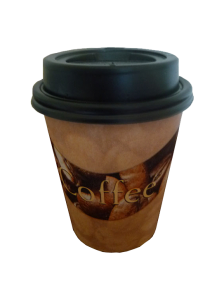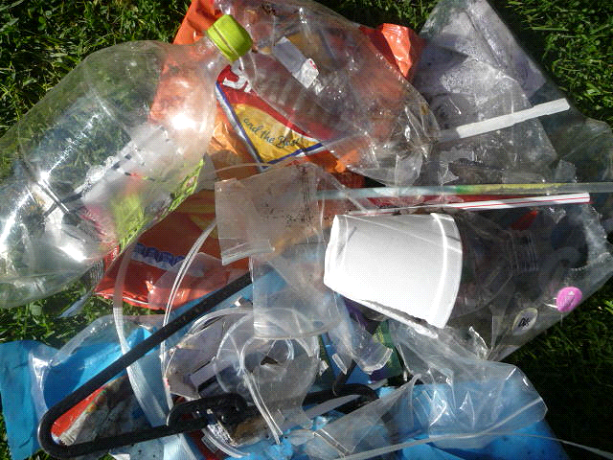Let’s be truthful about Sustainable Packaging Claims on-pack – Australia
Posted on September 26, 2019 by DrRossH in Plastic Waste NewsNerida Kelton MAIP
With the 2025 National Packaging Targets significantly shifting the packaging design landscape in Australia, a critical element that is coming up short is truthful and accurate environmental claims on-pack. More than ever consumers are demanding brands to be honest about their sustainability journey including the choice of wording and logos on-pack.
Gone are the days when you could get away with simply writing ‘recyclable’, ‘biodegradable’ or ‘compostable’ on pack. The use of statements like the ‘Do the right thing logo’, the Recycle ‘Mobius loop’ logo or the Plastic Identification Codes (PIC 1 to 7) just further confuse the consumer. The 2025 National Packaging Targets are now the perfect opportunity to review all environmental on-pack symbols and wording.
Changing the face of on-pack logos
Next time you are in a grocery store let me encourage you to pick up 6 different products and have a look at all the logos and symbols being used. You will see arrows, numbers, rubbish bins, lots of abbreviations for industry groups and governing bodies and a whole lot of information that in truth means very little to a consumer.
Plastic Identification Code (PIC)
The use of the Plastic Identification Code (PIC), or the symbol of the chasing arrow with a number in the middle, that is seen on most plastic packaging identifies the type of plastic the packaging is made of. For example, PET is classified as 1, HDPE is 2, PVC is 3, LDPE is 4, Polypropylene is 5, Polystyrene is 6 and 7 is Other or mixed plastic types. This voluntary coding system adopted in 1990 assisted the collection, recovery and management of used plastics in Australia. However, to most consumers they think it means they can put the plastic pack into the recycling bin; even if it isn’t a recyclable plastic.
As a packaging technologist, designer or marketer could you honestly say that you know which bin each number should be placed in? Do you know for a fact whether it is actually capable of being recycled through our facilities in this country, or that of your export market? Now imagine how confusing these symbols are to a consumer.
Do The Right Thing logo
The ‘Litterman’ guy has been around for years. You will all know – even if it is subconsciously – the symbol of the man who throws the rubbish in the bin. Whilst he is familiar to consumers ask yourself what does the logo really mean? Does it mean that the product is recyclable or simply that you should be responsible and make sure the product goes in a rubbish bin at the end of life?
The ‘Do the Right Thing’ slogan and symbol was a part of a marketing campaign launched in the 70’s that was intended as a ‘Don’t Litter campaign’. According to Keep Australia Beautiful ‘When the Do The Right Thing campaign was launched, 80% of people recognised the catch phrase and in 2015, only 38% said they knew the phrase.’
So what does the symbol mean in the world of sustainable packaging and to consumers today? Are there more important and less confusing symbols that should be on-pack to ensure that packaging is placed in the right bin at end-of-life?
Confusing claims and wording
Another challenge within the Sustainable Packaging Journey is when brands decide to use words like ‘biodegradable’ or ‘compostable’ on-pack. Having packaging that is biodegradable or compostable may seem to be a good environmental initiative but stating this on-pack is often confusing to consumers. If there are no available consumer collection or composting facilities that will accept this type of packaging in the country of sale then this type of wording can be misleading. The AIP has spoken to many people over the last couple of years who naturally assume that if the packaging says it is ‘compostable’ or ‘biodegradable’ that all is right in the world.
The use of the term ‘biodegradable’ also leads consumers to believe that, no matter where disposed, biodegradable packaging will disappear to nothing within a very short period. This can lead the consumer to erroneously believe it is acceptable to litter biodegradable packaging, or that it will solve the ocean plastics issues.
In the same way the use of compostable plastics, which may ‘compost’ (biodegrade by micro-organisms in an oxygen environment), if placed in the right composting environment, can be very misleading if consumers don’t have access to facilities for the collection and composting of compostable packaging with organic waste. Incidentally the packaging may compost, but they do not create compost (nutrient rich soil).
Before selecting compostable packaging, a responsible brand should be identifying whether there are facilities available to their consumers to collect compostable packaging with their organic waste. If there are, then communicate this information on-pack so consumers understand the end-of-life process.
There are two other options currently available for use of compostable packaging.
1. The first being to establish ‘closed loop facilities’ for the collection of compostable materials and certified packaging. These closed loop systems are designed to facilitate the collection and recycling of nutrient rich organic material, such as food scraps along with the certified compostable packaging and return the nutrients into the soil rather than allowing them to rot away in landfill.
2. The second option is to identify home compostable certified packaging and encourage the consumer to dispose of via their home composting. The concern with this option, however, is that many consumers will either contaminate the recycling system with this packaging or think they are doing the right thing and put it in the rubbish bin.
The Australian Bioplastics Association (ABA) provides a voluntary system to companies or individuals wishing to have their compostable and biodegradable plastics packaging certified. There are two certifications available. Australian Standard 4736-2006, compostable and biodegradable plastics – ‘Biodegradable plastics suitable for composting and other microbial treatment’ and Australian Standard AS 5810-2010 Home Composting – ‘Biodegradable plastics suitable for home composting’.
Recyclable Symbols and Logos
There are so many variants of a recyclable logo or symbol that it makes your head spin and once again consumers see these types of symbols on pack and naturally presume that they mean that the packaging is going to be recycled if placed in the correct bin. The question that now needs to be asked is ‘can this packaging truly be recycled in the country we sell the product in?’ The answer needs to determine the logos you use on-pack moving forward. Brands need to be re-designing their on-pack communication with honesty, clarity and clear and easy-to-understand explanations.
So where to from here?
In April 2018, the Australian Packaging Covenant Organisation (APCO) launched a nationwide labelling scheme that will help consumers better understand how to recycle products effectively and assist brand owners to design packaging that is recyclable at end-of-life. In conjunction with partners, Planet Ark and PREP Design, this scheme aims to increase recycling and recovery rates and contribute to cleaner recycling streams.
The APCO Packaging Recycling Label Program is a nation-wide labelling program that provides designers and brand owners with the tools to inform responsible packaging design and helps consumers to understand how to correctly dispose of packaging. The two elements of the program are the Packaging Recyclability Evaluation Portal (PREP) and the Australasian Recycling Label (ARL).
Packaging Recyclability Evaluation Portal (PREP)
PREP provides a way for brand owners, manufacturers and designers to assess whether an item of packaging could be classified as ‘recyclable’ through kerbside collection in Australian and New Zealand. PREP produces a report for each ‘project’ that is evaluated. A project will list the recyclability classification for each ‘separable component’ plus the user may nominate a scenario where the separable components are joined at the time of disposal (e.g. bottle and cap). Combining technical recyclability and collection coverage, PREP provides the evidence base for applying the Australasian Recycling Label on-pack.
Australasian Recycling Label (ARL)
The Australasian Recycling Label (ARL) is an evidence-based, standardised labelling system that provides clear and consistent on-pack recycling information to inform consumers of the correct disposal method. The ARL is designed to be used in conjunction with PREP, which informs the user of the correct on-pack ARL artwork for each ‘separable component’ of packaging. It is a simple and effective method to improve consumer recycling behaviours.
AIP Education & Training
The Australian Institute of Packaging (AIP) have also developed a number of training courses that will greatly assist your Sustainable Packaging journey including ‘Tools to Help you Meet the 2025 National Packaging Targets: PREP and ARL’, ‘Introduction to Sustainable Packaging Design’, ‘Lifecycle Assessment Tools for Sustainable Packaging Design‘, the ‘Future of Flexible Packaging’ and ‘The Future of bioplastics and compostable packaging’.
With the development of the 2025 National Packaging Targets now is the time to stop and review all of your on-pack information to ensure that you are communicating effectively and honestly to consumers about your sustainable packaging.
Nerida Kelton MAIP
Executive Director
Australian Institute of Packaging (AIP)

 How many people today grab a takeaway coffee cup from the local cafe to drink on the go? We don’t know, but the number must be enormous.. Most every one of the above have a plastic top that will last 100s of years. Some cafes still use plastic cups that last a similar time. Is 10 minutes of coffee worth 100s of years of trash?
These items can be seen littering our gutters and on our streets all over the place. If they were all cardboard, they would still be littered, but they would, at least, be gone in a short time.
They do not need to be made of plastic.
How many people today grab a takeaway coffee cup from the local cafe to drink on the go? We don’t know, but the number must be enormous.. Most every one of the above have a plastic top that will last 100s of years. Some cafes still use plastic cups that last a similar time. Is 10 minutes of coffee worth 100s of years of trash?
These items can be seen littering our gutters and on our streets all over the place. If they were all cardboard, they would still be littered, but they would, at least, be gone in a short time.
They do not need to be made of plastic.
 On the way home from the gym last week, a distance of about 1 km (1/2 mile), I counted the items of plastic litter on the curb as I walked. In that short distance I counted 63 pieces of plastic litter. Plastic drink bottles, bottle tops, candy wrappers, plastic film, polystyrene fragments etc. That seemed to be a lot to me. I guess it is a generational thing. Our parents would have been horrified to see that amount, whereas it seems to go unnoticed by our youth of today. In another 20 years how many pieces will there be on this stretch, -- 200? What will today’s youth think of that new amount then when they are older? Will their children be so readily accepting of a higher amount of litter?
On the way home from the gym last week, a distance of about 1 km (1/2 mile), I counted the items of plastic litter on the curb as I walked. In that short distance I counted 63 pieces of plastic litter. Plastic drink bottles, bottle tops, candy wrappers, plastic film, polystyrene fragments etc. That seemed to be a lot to me. I guess it is a generational thing. Our parents would have been horrified to see that amount, whereas it seems to go unnoticed by our youth of today. In another 20 years how many pieces will there be on this stretch, -- 200? What will today’s youth think of that new amount then when they are older? Will their children be so readily accepting of a higher amount of litter?
Discussion · No Comments
There are no responses to "Let’s be truthful about Sustainable Packaging Claims on-pack – Australia". Comments are closed for this post.Oops! Sorry, comments are closed at this time. Please try again later.